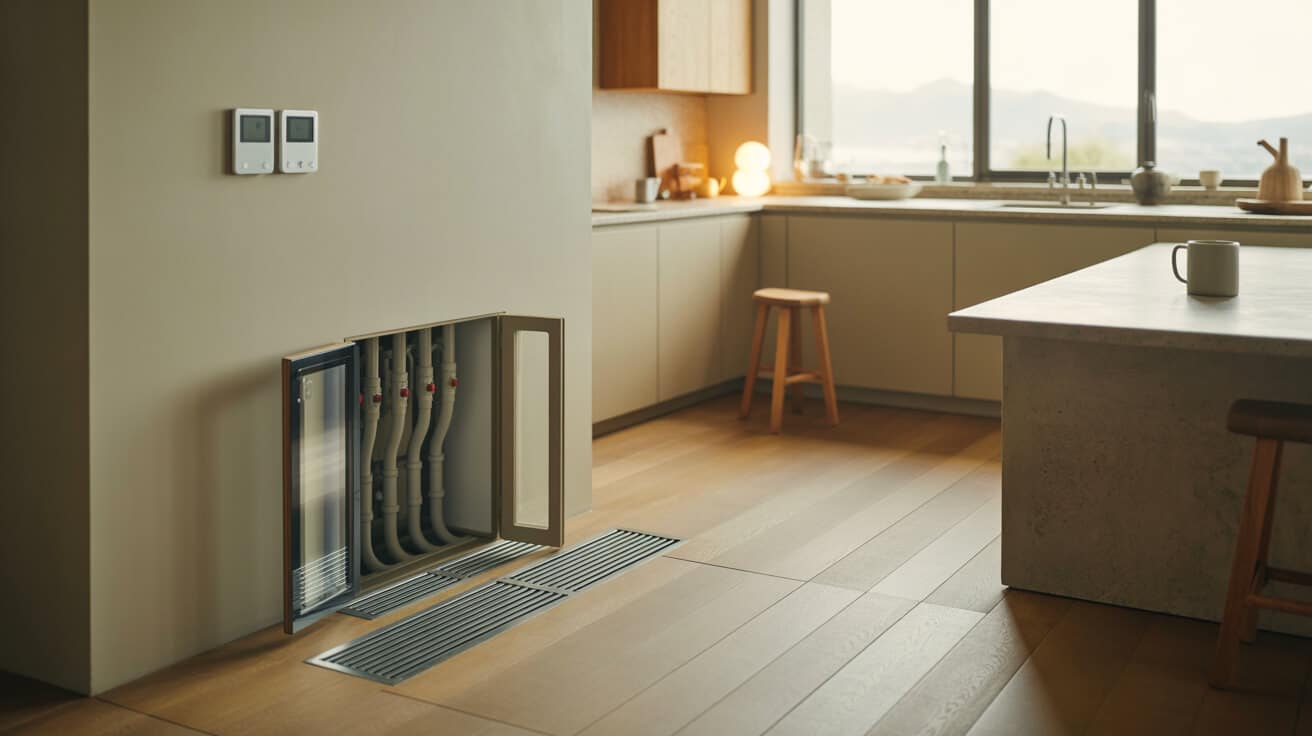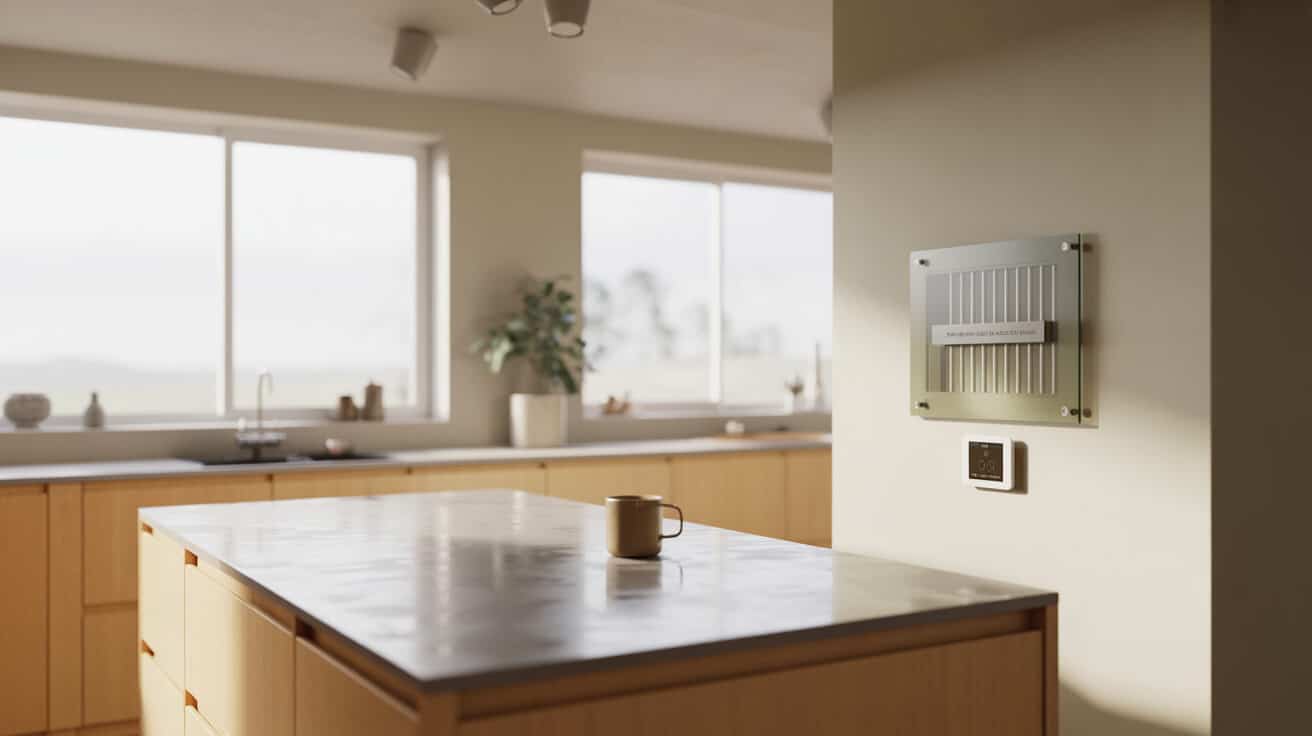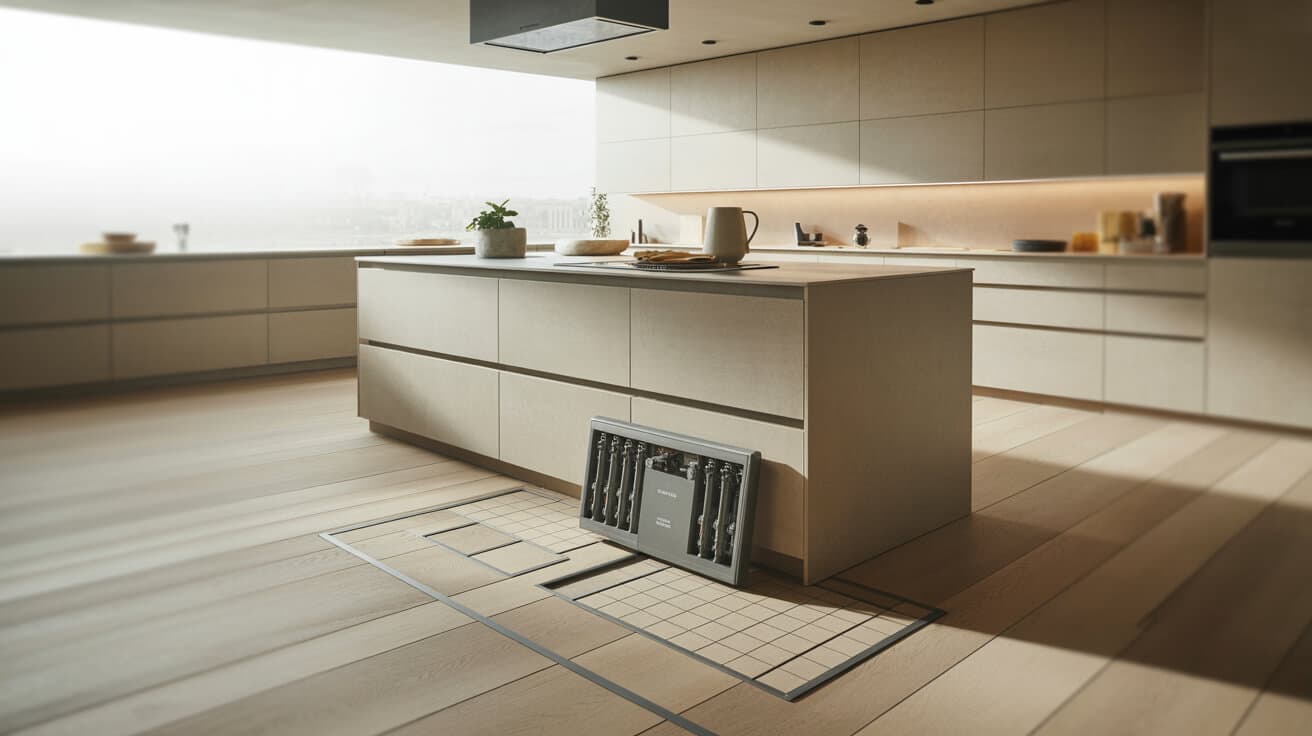Underfloor heating zoning harnesses a blend of engineering logic and modern control technology to grant you precise command over the indoor environment. Rather than treating a property as a monolithic climate space, a properly designed zoning scheme divides the building into discrete, manageable sectors, each animated by local demands and user schedules. Plumbers 4U and similar organisations integrate advanced hydronic distribution, manifold engineering, digital thermostats, and programmable controls to construct responsive heating networks tailored to your property’s layout and operational rhythms. The result for your company is not just thermal comfort, but also minimised energy expenditure, scalable maintenance, and an infrastructure perfectly suited to modern living and regulatory frameworks.
Etymology or Name Origin
The term “zoning” originates from city planning and architecture, where it signifies partitioning space for discrete use or regulatory purposes. In heating technology, “zoning” reflects the compartmentalization of climate control within a larger system. The word “manifold”—rooted in Latin manu (hand) and fold (to multiply)—in plumbing describes a device that splits a single source into multiple outputs, essential to distributing hot water to each zone in an underfloor system. The thermostat, fusing Greek “thermo” (heat) and “stat” (stationary/keeper), signals the fusion of temperature sensing with automated regulation. Adoption of these terms into building services highlights the sector’s evolution towards client-centric controls, precision asset management, and system modularity.
Overview and context
Heating distribution—historically dominated by radiators—has shifted in focus as evolving user demands and ecological imperatives have placed equal weight on energy efficiency, occupant experience, and regulatory alignment. Underfloor heating platforms deliver radiant warmth by circulating warm water through embedded piping beneath flooring, creating a low-intensity, evenly distributed environment. Zoning elevates this baseline by establishing isolated sections (zones), each governed by its own thermostat and control logic. For property owners and operators, this enables dynamic adaptation to changing requirements: unused rooms can be cooled or shut off, high-traffic zones can be scheduled to pre-heat before peak use, and temperature bands can be precisely matched to the needs of different tenants, businesses, or departments. Service providers like Plumbers 4U embed these capabilities within energy audits, EPC strategies, and compliance protocols, ensuring installations deliver measurable improvements over legacy monolithic heating.
History
Early radiant systems
Radiant floor heating originated in antiquity, with the Roman hypocaust system employing open basements and flues to spread heat, and the Asian ondol design routing hot flue gases beneath stones. Though ingenious, ancient systems offered limited control—occupants experienced a single, undifferentiated climate regardless of room use or load.
Emergence of modern zoning
Twentieth-century material advances—such as corrosion-resistant copper, then polyethylene (PEX) piping—allowed distributed hydronic circuits beneath floors. The 1970s and 1980s saw the spread of multi-port manifolds and the first mechanical zone valves, enhancing grip over individual sections of a property. Digital thermostatic controls and programmable relays enabled stepwise allocation of hot water, paving the way for genuine zoning. In commercial and advanced residential construction, this segmentation was catalysed by the need for increased user comfort, energy efficiency, and compliance.
Recent evolution and regulatory drivers
Legislative frameworks such as the United Kingdom’s Part L of the Building Regulations and tightening EPC criteria have compelled widespread adoption of multi-zone systems. The intersection of energy cost anxiety, ecological mandates, and personalised comfort has propelled both commercial and domestic operators to seek granular heating solutions. Modern installations emphasise ease of use, data-driven system monitoring, and cloud-linked maintenance. Service providers routinely design zones to correspond not just to architectural divisions, but to how your company or household functions day-to-day.

Concept and description
A zoned underfloor heating system is architected as a network of water-carrying loops embedded in the floor, each serving a discrete spatial domain. At the hydraulic core is a manifold—an engineered hub outfitted with flow metres and actuator mounts, facilitating the discreet delivery of water to each pipe loop. Each loop (zone) terminates in a designated room or area, chosen based on layout, thermal load, or occupancy patterns. On-demand signals from room-by-room thermostats, whether wired, wireless, or integrated with smart home platforms, trigger the respective actuator valves. These actuators, electrically or digitally actuated, open or close, controlling whether hot water circulates in a given area.
The wiring centre or relay box forms the electrical and logic backbone, mediating between thermostats, actuators, and the central heat producer (boiler or heat pump). Intelligent systems modulate not only flow duration, but also manifold balance, pump sequencing, and temperature curves, optimising energy delivery according to real-time environmental feedback. In modern commercial buildings, additional sensors—measuring external temperature, humidity, or floor surface heat—can further refine the control algorithm. Insulation layers are placed beneath pipe runs to direct heat upward and ensure performance.
| Component | Function | Common Forms |
|---|---|---|
| Manifold | Central distribution, flow balancing, actuator mounting | Modular bar, with integrated valves/metres |
| Actuator | Opens/closes water flow to each zone based on thermostat demand | 230V, 24V electrothermal or digital |
| Thermostat | Senses and requests heat for individual zones | Mechanical, digital, wireless, app-based |
| Wiring Centre | Mediates control signals and coordinates pump/boiler or heat pump loading | DIN-rail, relay, programmable bus |
| Hydronic Pipework | Distributes heated water through each zone | PEX, PERT, copper, composite |
| Insulation Layers | Maximises upward heat delivery, reduces heat loss | Rigid foam, reflective foil, mineral board |
Functionality, purpose, and applications
Personalised temperature management
With every zone adjustable, users can precisely tailor comfort settings for varying occupancy, usage, solar gain, or time of day. For instance, our services at Plumbers 4U routinely prioritise bathrooms in early hours, living areas at dusk, and lower settings at night or during vacancy—reflecting typical user needs without unnecessary heating expense.
Energy efficiency and operational flexibility
By limiting heating to only predefined areas on specific schedules, zoned setups yield measurable reductions in overall energy use. This effect compounds in large properties, commercial settings with erratic occupancy, or multi-let buildings, where unused spaces are isolated from the heating schedule.
Maintenance and system integrity
Zoning simplifies troubleshooting, as issues—such as flow reduction, valve failure, or sensor error—are traceable to specific circuits or rooms. Staged maintenance minimises downtime and cost, reducing disruption to your operation.
Compliance and asset value protection
Partitioned control aligns with landlord and business responsibilities for tenant well-being, compliance with EPC targets, and facility valuation. For property owners, heating audits using zoning data can reveal patterns that inform future upgrades, policy compliance, or energy grant application.
Typical deployment environments
- Single-family dwellings, particularly where usage varies between floors or wings
- Apartment blocks and HMOs with discrete letting units or shared facilities
- Hotels and hospitality venues, facilitating individualised guest comfort
- Educational campuses and healthcare settings with high requirements for precision climate
- Commercial and office buildings seeking to accommodate flexible working
Classifications and types
By control technology
- Wired control: Hardwired thermostats and relay networks; provides robust signal reliability, suited to permanent builds and long-term retrofits
- Wireless control: Utilises radio frequency or mesh networking; provides adaptability in renovations or installations with access limitations, integrates with mobile devices or building energy management systems
By system layout
- Single-room zoning: Each primary room or function area forms a separate zone; maximises user control, minimises standby losses
- Group/aggregated zoning: Discrete spaces (e.g., several offices or bedrooms) are bundled into larger zones; applies in properties with predictable shared use
By scale and application
- Domestic: Focused on maximum personal comfort and running cost control
- Commercial: Designed for adaptability, energy reporting, and tenant management
- Hybrid: Combination of underfloor and traditional radiator circuits in a single property, requiring variable response controls and mixing valves
Table 2: Comparison of zone control approaches
| Attribute | Wired | Wireless | Group/aggregated |
|---|---|---|---|
| Stability | High signal reliability | Dependent on signal strength | Moderate |
| Installation Cost | Higher in retrofit | Lower in retrofit | Lowest per zone |
| Flexibility | Permanent, less adaptive | Easily reconfigured | Suited for stable layouts |
| Compatibility | Universal | May require brand matching | Universal |
Leading brands such as Uponor, Heatmiser, Nu-Heat, and Polypipe offer specialised manifolds, controls, and integration packages to further streamline selection and performance.
Systems, tools, and methodologies
Design and specification
- Site survey: Identify zones based on building plans, user needs, insulation profile, and window orientation.
- Load calculation: Determine required output for each zone, taking into account external walls, occupancy, and desired setpoint.
- Pipe layout mapping: Design loop schemas with precise spacing and lengths to ensure even distribution, avoiding excessive pressure drops.
- Manifold positioning: Locate accessible, central points that minimise run lengths and balance hydraulic distribution.
- Component selection: Match actuator, thermostat, and wiring centre types to system demands and user interface expectations.
Installation sequencing
- Prepare the substrate, insulation, and vapour barrier
- Lay and fix pipes as per design, using staples/clips or fitting boards
- Assemble and instal manifolds, connecting all zone loops with labelled inlets/outlets
- Instal thermostats, wiring centres, and programmable controls per electric code
- Test hydraulics under pressure, then proceed to screeding or covering and electrical checks
Commissioning methodology
- Systematically flush and fill circuits, check for leaks and obstructions
- Balance flow using manifold valves, referencing manufacturer guidelines
- Programme thermostats per user schedule, confirm each actuator responds correctly
- Document all settings and create user-friendly guides for ongoing use
Maintenance routines
- Annual checks: verify flow metres, test actuator movement, replace worn batteries or sensors, recalibrate thermostats
- Record and interpret diagnostics via central control interface (where available)

Stakeholders and entities involved
Heating system zoning intersects with a multi-disciplinary landscape:
Installation/service professionals
- Plumbing engineers and heating technicians: custodians of installation quality, safety, and compliance
- Electricians: responsible for integration of control wiring and protection devices
- Architects and system designers: aligning thermal zoning with broader building objectives
End users and property operators
- Homeowners and tenants: primary beneficiaries of comfort and cost savings
- Landlords and letting agents: accountable for compliance and maintenance
- Facilities managers: gatekeepers of commercial/educational/healthcare operational continuity
Standards and regulatory participants
- Certification agencies (e.g., WRAS, G3, Part L): enforcing product and installation standards
- Manufacturers and suppliers: providers of validated systems and technical support
These roles interact dynamically across all project stages, with Plumbers 4U’s integrative workflows typically pairing each installation with robust documentation, multi-channel support, and routine compliance follow-up.
Legal, regulatory, and ethical considerations
Installation standards and certification
- Part L of the Building Regulations: (UK): mandates energy conservation; zoning in multi-occupancy buildings or large open areas is required
- Water Regulations Advisory Scheme (WRAS): approves all water-handling components within heating circuits to protect potable supply
- G3 Regulations: specify controls/safety for unvented hot water elements within zoned networks
- Installer qualification: Gas Safe, Part P, and manufacturer-sanctioned training are prerequisites for system certification
Landlord and owner responsibilities
- Provide verifiable documentation of heating performance and safety compliance
- Maintain responsive service frameworks to avoid tenant complaints or enforcement actions
- Deliver asset performance reports for EPC, mortgage, or grant application
User protection and data stewardship
- Ensure all documentation—wiring diagrams, operational guides, certification—is supplied at handover
- For systems with digital control, manage personal/user data with transparency and consent
Performance metrics, data, and measurements
Performance measurement is foundational to quality assurance:
Comfort and thermal analytics
- Zone setpoint achievement rates: how quickly and accurately room temps meet targets
- Thermal uniformity across floor area; floor/vs room temp delta metrics
Efficiency and outcome analytics
- Energy use per zone and for the whole system
- Scheduling match: alignment of user programmes with actual occupancy/need
- Occurrence and resolution tracking for minor/major faults
Maintenance and inspection protocols
- Annual system audits: record actuator cycles, valve condition, control calibration
- Digital logging (where available) of user interactions for system optimization
Your organisation can deploy this data for ongoing maintenance optimization, warranty validation, and incremental improvements, positioning you at the forefront of efficiency and operational transparency.
Challenges, barriers, and limitations
Operational and technical issues
- Increased wiring/control complexity in multi-zone environments
- Compatibility across brands and protocols—not all systems “speak” to each other seamlessly
- Diagnostics: pinpointing source of comfort/delivery failures may require technical expertise
- Response lag: slow heating adjustment inherent to mass of underfloor installations, demanding schedule-based or predictive programming
- Higher upfront installation cost and commissioning expertise required
- Perceived complexity or “over-engineering” can dampen user acceptance without clear onboarding
- Legacy building constraints may preclude ideal zoning or necessitate bespoke solutions
Documentation and accountability
- Incomplete records pose barriers to efficient troubleshooting and legal compliance
- Maintenance neglect risks both comfort loss and legal exposure for landlords/managers
Impact, influence, and legacy
Energy, cost, and sustainability
- Documented energy reductions and cost savings vs non-zoned counterparts—especially over multi-year horizons
- Reinforces compliance with evolving sustainability and decarbonization targets
Occupant, asset, and market influence
- Tangible gains in comfort, health, and user satisfaction
- Enhanced EPC scores, supporting property valuation and marketability
- Emergence of smart control standards—zoning as baseline for intelligent asset management
Industry effects
- Accelerates the bar for professional best practice, requiring continual training by organisations like Plumbers 4U
- Underpins reliability for new business models (e.g., demand-based rental pricing, climate-specific insurance products)
Future directions, cultural relevance, and design discourse
Emerging developments in underfloor heating zoning increasingly revolve around adaptive, self-learning systems capable of recognising occupancy patterns, weather shifts, and market signals to optimise delivery without user intervention. Open-standard protocols and growing interoperability between suppliers are likely to reduce lifecycle costs and facilitate competitive innovation. Societal narratives increasingly connect comfort, sustainability, and well-being, elevating the symbolic weight of heating infrastructure in your company’s real estate strategies. For facilities directors and service brands alike, zoning’s evolution will continue to blend rigorous engineering with intuitive user experiences, reflecting new priorities in climate-resilient architecture and transparent, value-driven service.

